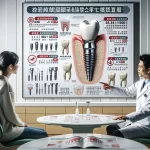Are you dreaming of a picture-perfect smile that radiates confidence and charm? Look no further than porcelain veneers—the ultimate cosmetic dental solution for transforming your teeth in 2024. In this comprehensive guide, we’ll explore the world of porcelain veneers, detailing their benefits, the placement process, and how they can help you achieve the smile of your dreams.
What Are Porcelain Veneers?
Porcelain veneers, also known as dental veneers or dental porcelain laminates, are ultra-thin, custom-made shells crafted from tooth-colored materials designed to cover the front surface of teeth. These wafer-thin shells are bonded to the front of your teeth, altering their color, shape, size, or length to create a flawless, symmetrical smile.
The Magic of Porcelain
Porcelain veneers are made from advanced ceramic materials that closely mimic the appearance and translucency of natural tooth enamel. This material is not only aesthetically pleasing but also incredibly durable and stain-resistant, ensuring your veneers maintain their stunning appearance for years to come.
Versatility in Smile Makeovers
Porcelain veneers are a versatile cosmetic dental treatment that can address a wide range of aesthetic concerns, including:
- Discolored Teeth: Resistant to whitening treatments.
- Chipped or Cracked Teeth: Repairing imperfections.
- Worn-Down Teeth: Restoring lost structure.
- Misaligned or Irregularly Shaped Teeth: Creating a uniform appearance.
- Gaps Between Teeth: Closing spaces for a complete smile.
By addressing these issues, porcelain veneers can dramatically enhance your overall appearance, boosting your self-confidence and quality of life.
The Porcelain Veneer Process: From Consultation to Dazzling Smile
Step 1: Initial Consultation
Your journey to a perfect smile begins with a consultation with your trusted cosmetic dentist. During this visit, your dentist will assess your oral health, discuss your smile goals, and determine if porcelain veneers are the best option for you. They may take X-rays and impressions of your teeth to create a personalized treatment plan.
Step 2: Preparation
To prepare your teeth for veneers, your dentist will remove a thin layer of enamel—roughly equal to the thickness of the veneer—from the tooth surface. This process ensures a seamless fit for your custom veneers. Next, precise impressions of your teeth will be taken to fabricate your personalized veneers in a dental laboratory.
Step 3: Fabrication
Skilled dental technicians will use these impressions and specifications provided by your dentist to craft your custom porcelain veneers. This process typically takes a few weeks during which you may wear temporary veneers to protect your prepared teeth.
Step 4: Bonding
Once your custom veneers are ready, you’ll return to the dental office for final placement. Your dentist will check the fit, shape, and color of the veneers to ensure they perfectly complement your smile. After any necessary adjustments, your teeth will be cleaned and polished before the veneers are permanently cemented using a special light beam that hardens the adhesive.
Step 5: Reveal Your New Smile
With your porcelain veneers securely in place, you can immediately enjoy your stunning new smile! Your dentist will provide aftercare instructions and schedule follow-up appointments to monitor both your veneers and overall oral health.
Benefits of Porcelain Veneers
Natural Appearance
One of the most significant advantages of porcelain veneers is their ability to mimic natural teeth. The translucent quality of porcelain allows it to reflect light similarly to tooth enamel, creating a realistic look that blends seamlessly with surrounding teeth.
Durability and Longevity
Porcelain veneers are incredibly durable and long-lasting. With proper care and maintenance, they can last between 10 to 15 years or even longer. The strong ceramic material resists staining and chipping, ensuring that your smile remains brilliant for years.
Minimally Invasive
Compared to other cosmetic treatments like crowns, porcelain veneers require minimal tooth preparation. Only a thin layer of enamel is removed, preserving more of your natural tooth structure—a conservative approach for those seeking less invasive options.
Stain Resistance
Porcelain is highly resistant to staining and discoloration. Unlike natural teeth that absorb stains from coffee or tea, the smooth surface of porcelain repels stains, maintaining the brightness of your smile.
Confidence Boost
A beautiful smile can significantly impact self-esteem. Porcelain veneers help you feel more confident in personal and professional settings—allowing you to smile freely without hesitation.
Porcelain Veneers vs. Other Cosmetic Dental Treatments
When considering a smile makeover, understanding how porcelain veneers compare with other popular cosmetic treatments is essential:
| Treatment Type | Description | Pros | Cons |
|---|---|---|---|
| Dental Bonding | Tooth-colored resin applied to conceal imperfections | More affordable | Less durable; requires frequent touch-ups |
| Dental Crowns | Tooth-shaped caps covering entire visible portion | Stronger for severely damaged teeth | Requires more tooth reduction |
| Teeth Whitening | Professional treatment to lighten natural teeth | Quick results | Doesn’t address structural issues |
Caring for Your Porcelain Veneers
To ensure longevity and beauty:
- Oral Hygiene: Maintain excellent oral hygiene by brushing twice daily with non-abrasive toothpaste and flossing daily.
- Avoid Excessive Force: While durable, avoid biting hard objects (ice or pens) that could damage them.
- Regular Dental Check-Ups: Visit your dentist regularly for check-ups and professional cleanings.
The Cost of Porcelain Veneers
The cost varies based on factors such as the number needed and complexity but generally ranges from $925 to $2,500 per tooth. While this may seem like a significant investment, many patients find that the transformative results make it worthwhile.
Conclusion
Porcelain veneers offer an exceptional solution for enhancing smiles in 2024. With their natural appearance, durability, and versatility in addressing various aesthetic concerns, they provide an opportunity for anyone seeking a dazzling smile. By understanding the process and care requirements associated with porcelain veneers, you can make an informed decision about whether this cosmetic treatment is right for you.
If you’re ready to take the first step towards achieving your dream smile, consult with a trusted cosmetic dentist who can guide you through the process and create a personalized treatment plan tailored to your unique needs. Unlock the power of a beautiful smile that leaves a lasting impression!
Porcelain veneers can last between 10-20 years, while composite veneers can last up to seven years.
Good oral hygiene is essential for maintaining veneers. If you are a smoker, it is recommended to stop, as smoking can stain veneers. Tea and coffee drinkers should limit their consumption or wash down with water to reduce the chances of staining.
While veneers are generally safe, the tooth underneath is still susceptible to decay, and your gums can succumb to gum disease. Therefore, maintaining good oral hygiene is crucial.







